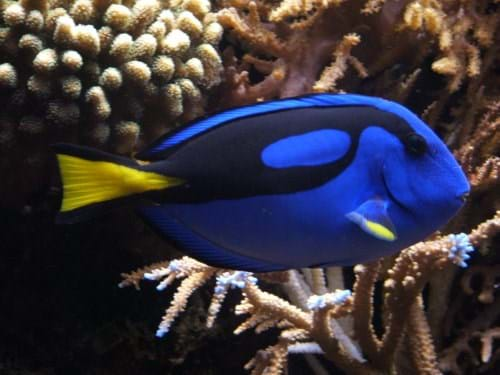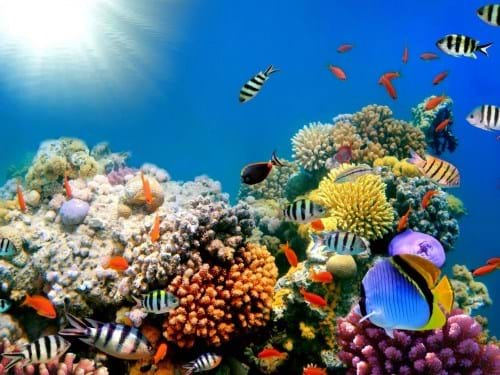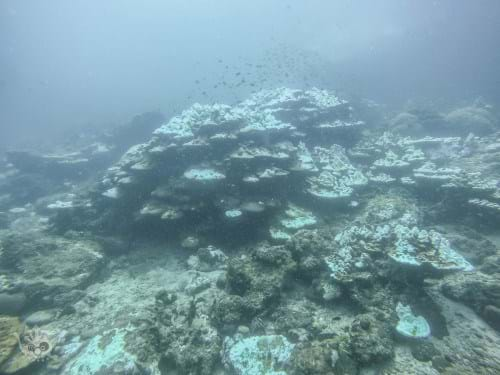Just keep swimming…
With the recent release of Pixar’s Finding Dory, many PSAs have been shared on social media to inform the masses NOT to keep a “Dory” fish, or blue tang (Paracanthurus hepatus), in a saltwater aquarium at home, citing a number of reasons.

What a beautiful fish this is. Picture credit.
Since “Dory” has never been successfully bred in captivity, blue tangs and many other types of marine ornamental fish are removed from coral reefs for the saltwater aquarium industry. Unsustainable removal of the many colourful reef fish as ornamental fish, especially at a time of global mass coral bleaching due to high sea surface temperatures from the El Nino Southern Oscillation phenomenon, will further inhibit the recovery of a coral reef ecosystem, which already does not look too good for the majority of the bleached corals.

Colourful reef fishes. Picture credit.
Bleached corals are corals that have lost their pigment, 98% of which came from microscopic symbiotic organisms, commonly known as zooxanthellae. Under stress like rising sea surface temperatures, corals can expel these very important symbiotic organisms as the zooxanthellae have been damaged by high water temperatures. If conditions return to normal on time (prolonged stressors will cause these corals to completely die), corals can then “catch” free-swimming, healthy zooxanthellae from the surrounding water to gain its vibrant colours again.

The mass bleaching seen in the most popular dive site at Pulau Payar Marine Park taken recently.
So how do these fish help out when corals are recovering from a bleaching event? Many of these beautiful reef fish can feed on growing macroalgae (seaweed) which can tower and overshade corals if not “trimmed”. This is a vital process in a coral reef ecosystem because it allows for sunlight to reach the corals for the zooxanthellae to carry out photosynthesis. The food created by the zooxanthellae from photosynthesis are then shared with the corals and is the main source of energy for the corals. So even if the corals do get to recover from a bleaching event, they may still do badly if there are too many tall macroalgae growing on the corals.
Although irresponsible methods of ornamental fish are not the main cause of coral reef ecosystems failing (main causes are habitat destruction, overfishing for food, and climate change), their unsustainable removal exacerbates these negative impacts.
Therefore, let us try our very best to help these coral reefs thrive again by making informed decisions.